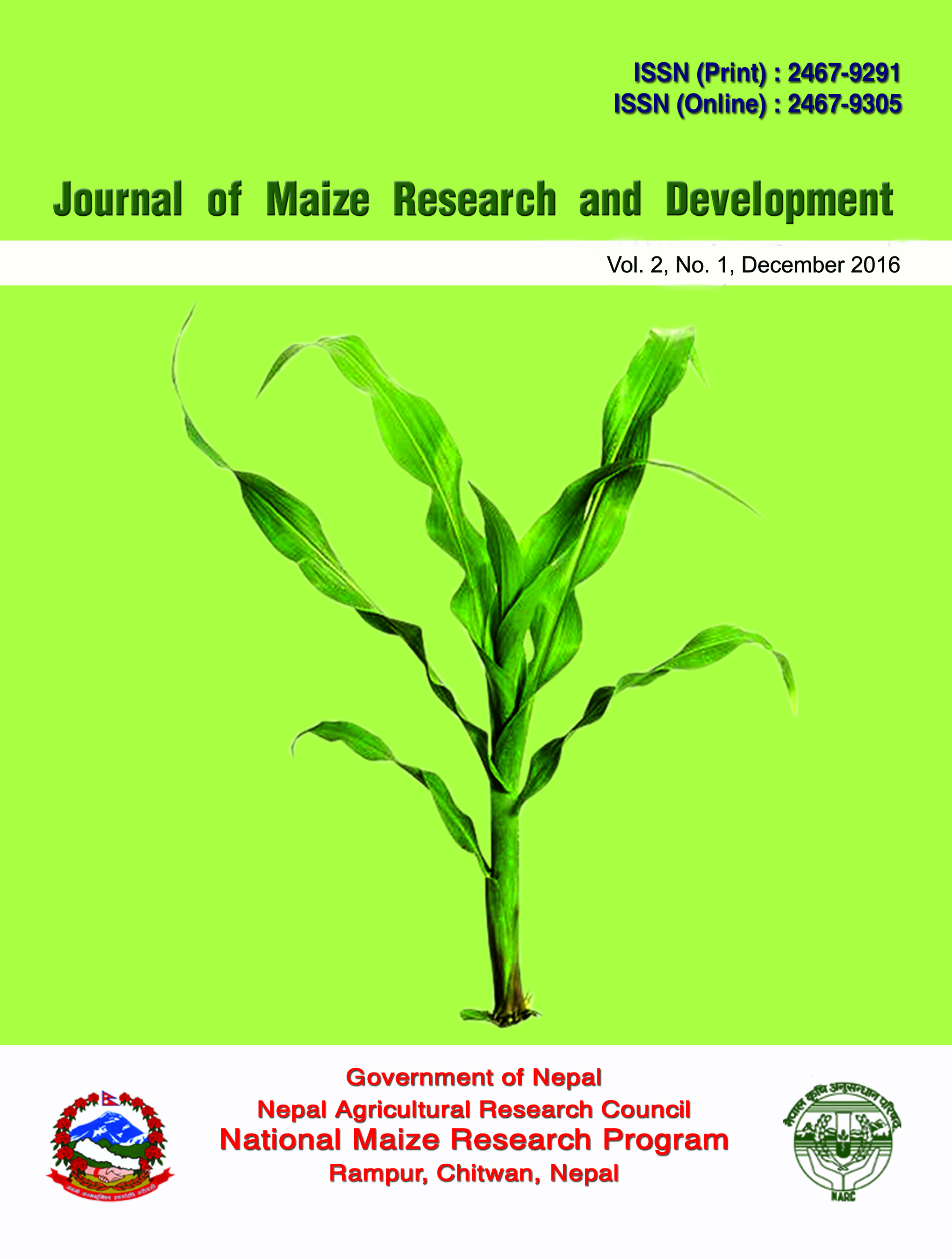Tillage methods and mulch on water saving and yield of spring maize in Chitwan
DOI:
https://doi.org/10.3126/jmrd.v2i1.16217Keywords:
Conventional tillage, Permanent beds, Spring maize, Water requirement, Zero tillageAbstract
Tillage methods and mulch influences the productivity and water requirement of spring maize hence a field experiment was conducted at the National Maize Research Program, Rampur in spring seasons of 2011 and 2012 with the objectives to evaluate different tillage methods with and without mulch on water requirement and grain yield of spring maize. The experiment was laid out in two factors factorial randomized complete design with three replications. The treatments consisted of tillage methods (Permanent bed, Zero tillage and Conventional tillage) and mulch (with and without). Irrigation timing was fixed as knee high stage, tasseling stage and milking/dough stage. Data on number of plants, number of ears, thousand grain weight and grain yield were recorded and analysed using GenStat. Two years combined result showed that the effect of tillage methods and mulch significant influenced grain yield and water requirement of spring maize. The maize grain yield was the highest in permanent beds with mulch (4626 kg ha-1) followed by zero tillage with mulch (3838 kg ha-1). Whereas total water applied calculated during the crop period were the highest in conventional tillage without mulch followed by conventional tillage with mulch. The permanent bed with mulch increased the yield and reduced the water requirement of spring maize in Chitwan.




